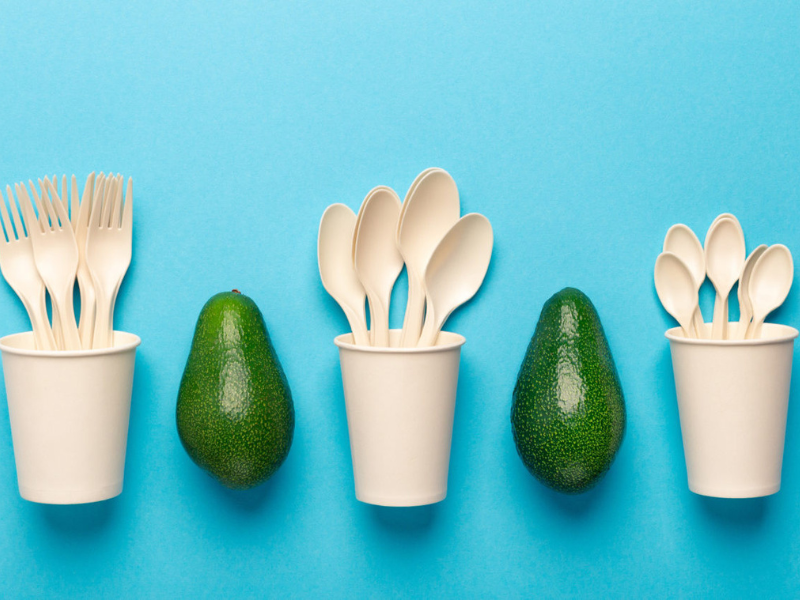PHA vs. PLA: Comparing Two Of The Most Famous Bioplastics
As the world intensifies its focus on sustainable materials, bioplastics have emerged as a promising solution. Two notable bioplastics are Polyhydroxyalkanoate (PHA) and Polylactic Acid (PLA). Both materials offer biodegradable alternatives to traditional plastics, but they differ in properties, applications, and environmental impact. In this article, we will compare PHA vs. PLA, outlining their characteristics, advantages, and the potential for various industrial uses. Understanding these differences can help industries and consumers make more informed decisions on which bioplastic to use.
Read more: What are bioplastics made from? Materials to make bioplastics
1. Overview of PHA and PLA
PHA and PLA are bioplastics derived from renewable resources. However, their production processes and sources of origin vary significantly:
- PHA (Polyhydroxyalkanoate) is a naturally occurring polyester produced by microbial fermentation. It is created when bacteria process sugars or lipids, accumulating PHA granules within their cells. PHA is recognized for its high biodegradability in marine and soil environments, making it an excellent choice for environmentally conscious applications.
- PLA (Polylactic Acid) is a polymer synthesized from fermented plant starches such as corn, sugarcane, or cassava. The fermentation process produces lactic acid, which is then polymerized to form PLA. PLA is widely known for its use in 3D printing, packaging, and single-use products.

Overview of PHA and PLA
While both PHA and PLA are biodegradable and stem from renewable resources, their distinct production methods lead to differences in their properties and behavior in various environments.
2. PHA vs. PLA: Comparing Properties

Comparing Properties of PHA and PLA
When comparing PHA vs. PLA, their physical and mechanical properties are key differentiators:
Biodegradability: PHA is more biodegradable than PLA, especially in natural environments such as oceans and soil. PLA requires industrial composting facilities with controlled conditions (high temperature and moisture) for efficient biodegradation. PHA, on the other hand, can decompose naturally in both marine and terrestrial ecosystems within a few months.
Tensile Strength: PLA has relatively high tensile strength, making it ideal for rigid products such as food containers, bottles, and 3D printing materials. PHA, while slightly less rigid, offers better flexibility and elongation, making it suitable for applications where flexibility is crucial, such as films and packaging.
Heat Resistance: PLA has a lower melting point, generally around 150°C, which can limit its use in high-temperature environments. PHA can withstand higher temperatures, offering better thermal stability.
Environmental Impact: Both PHA and PLA have minimal environmental impact compared to conventional plastics. However, due to PHA’s superior biodegradability, it is considered more eco-friendly, particularly in environments where industrial composting is not available.
3. PHA vs. PLA: Pros and Cons
Pros of PHA:
- Superior biodegradability in both land and aquatic environments
- Derived from various renewable feedstocks
- Can degrade without industrial composting
- Offers flexibility with decent mechanical properties
Cons of PHA:
- Higher production costs compared to PLA
- Less tensile strength compared to PLA
- Limited scalability due to the complexity of microbial fermentation
Pros of PLA:
- More cost-effective due to abundant sources like corn starch
- High tensile strength and rigidity, making it ideal for 3D printing and packaging
- Widespread industrial production and usage
Cons of PLA:
- Requires industrial composting for effective biodegradation
- Lower heat resistance, unsuitable for high-temperature applications
- Less flexible compared to PHA
4. Applications of PHA and PLA

Applications of PHA and PLA
Given their differing properties, PHA vs. PLA find applications in various industries:
- PHA Applications: Due to its excellent biodegradability, PHA is commonly used in marine and agricultural applications. Examples include fishing nets, agricultural films, and mulch films. It is also used in medical applications such as biodegradable sutures and drug delivery systems, thanks to its non-toxicity and bio-compatibility.
- PLA Applications: PLA’s rigidity and tensile strength make it an ideal candidate for packaging materials, disposable utensils, and 3D printing filaments. It is widely used in food packaging, beverage bottles, and compostable bags. PLA is also utilized in the textile industry to create biodegradable fabrics and in medical devices like screws and implants.
5. Conclusion
In the ongoing debate of PHA vs. PLA, both bioplastics present clear advantages depending on the intended application. PHA excels in environments where natural degradation is paramount, making it a top choice for marine and agricultural uses. PLA, on the other hand, shines in cost-effective, rigid applications like packaging and 3D printing. As the demand for sustainable materials grows, both PHA and PLA will play essential roles in reducing our reliance on traditional plastics.
6. About EuroPlas' Bioplastics
EuroPlas offers innovative bioplastic compounds under its BiONext brand, incorporating both PHA and PLA into their formulations. BiONext bioplastic compounds are derived from renewable sources such as corn, palm oil, and fossil fuels like PBAT (aliphatic-aromatic co-polyester). These compounds biodegrade fully within 12 months, breaking down into water, CO₂, and biomass, which can be repurposed as agricultural fertilizer, ensuring a circular life cycle.
BiONext bioplastics also possess exceptional mechanical properties, including high hardness, impact strength, and elongation. This allows them to meet both functional and aesthetic demands across various applications, including food packaging, agricultural films, and disposable cutlery.
By reducing dependence on fossil fuels and promoting sustainability, EuroPlas' BiONext bioplastics represent a significant advancement in the plastics industry. Their eco-friendly, high-performance materials are paving the way for a greener, more sustainable future.
Interested in learning more about PHA vs. PLA or EuroPlas’ BiONext bioplastic compounds? Contact us today to explore how our innovative solutions can help your business transition to sustainable, eco-friendly materials.